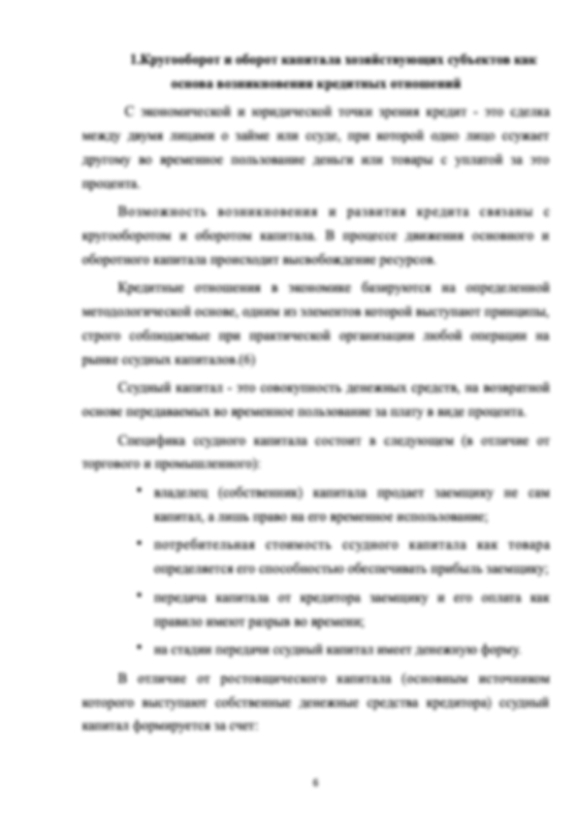Надеюсь продолжить работу с этим обязательным, пунктуальным, глубоко понимающим тему и специфику человеком.
Информация о работе
Подробнее о работе

THE CONSEQUENCES OF BASEL III REQUIREMENTS FOR LIQUIDITY HORIZON AND IT’S IMPLICATION ON OPTIMAL TRADING STRATEGY
- 46 страниц
- 2020 год
- 0 просмотров
- 0 покупок
Гарантия сервиса Автор24
Уникальность не ниже 50%
Фрагменты работ
Table of contents
Introduction. 3
Calculating the ES according to the Basel standards. 6
Literature review. 9
Methodology and data. 14
Results 26
Conclusion 41
Bibliography 42
Calculating the ES according to the Basel standards.
In this subsection, we present the methodology for calculating the ES outlined in Basel III and provide a simple example to give the basic idea of how the inclusion of the LH parameter affects the total ES. The minimum capital requirements for market risk were revised in January 14th, 2019, which replaced the earlier version from January 2016 and will come into effect on January 1st, 2022. The standards introduced some notable changes in terms of banks’ internal risk modelling but kept the old method of calculating expected shortfall intact. According to the standards, the banks have a discretion in terms of modelling their expected shortfall, but they also must fulfill the minimum requirements imposed by Basel III. The banks are required to use 97.
...
Literature review.
Our research covers wide range of topics, which can be summarized into three parts:
the research in the field of ES, optimal control, and liquidity horizon.
Regarding the first part, the topic of incorporating the LH directly into the calculation of the ES is not covered. The following papers address the methodology of ES computation in practice, the model risks, and the consequences of shifting from VaR to ES. The ES is a coherent risk measure (Artzner, et al. 2001) which makes it preferable to VaR, but according to Fissler and Ziegel (2019), it’s main drawback lies in its non-elicitability, meaning that it does not have a proper scoring (or loss) function used to rank different models by their prediction accuracy and hence, backtesting. But despite this drawback, the authors showed that ES is jointly elicitable with VaR, which is due to the strict elicitability of VaR itself. Based on these findings, Ziegel et.
...
Methodology and data.
Our model of determining the optimal liquidity horizon will be based on the model of Almgren and Chriss (2000). In their paper, Almgren and Chriss (2000) provided a two-sided approach for the problem of minimizing both execution uncertainty, which is unknown, and transaction costs, which are known to the trader. One of them centers around minimizing the implementation shortfall for a given variance:
min ( ) + ( )
(3)
≤ ∗
• where:
◦ E(x) is the expected implementation shortfall.
◦ V(x) is the variance of the implementation shortfall.
◦ x is the portion of holdings to be bought/sold at a fixed interval of time.
The implementation shortfall is the difference between the current value of the holdings and the actual proceeds from completely selling/buying off the portfolio:
̃
(4)
= 0−∑
• where:
◦ X is the total holdings position of the portfolio.
◦ S0 is the current market price of stocks.
...
Conclusion
In our thesis we presented a new formula-based approach to calculate optimal liquidity horizon (LH) for the purposes of scaling the base expected shortfall as outlined in Basel III Minimum Capital Requirements for Market Risk. Our research was in part, motivated by the absence of current researches in this topic, which left an open question of whether the current LH values recommended by the committee are reasonable enough to be employed in expected shortfall calculations. We employed the model of “half-life” from Almgren and Chriss (2000) to compute the LH values and defined an optimal expected shortfall (OES) measure. We then compared the OES to the current regulatory expected shortfall (RES) by means of regression-based ES backtesting, first proposed by Bayer, S., & Dimitriadis, T. (2018), on daily returns of SP500 and DJIA indices.
In the end, we obtained two interesting results.
...
Bibliography
Almgren, Robert, and Neil Chriss. 2000. "Optimal Execution of portfolio transactions." Journal of Risk 3 (2): 5-39.
Andreassen, Paul B. 1988. "Explaining the Price-Volume Relationship: The Difference between Price Changes and Changing Prices." Organizational Behavior and Human Deciion Processes 41: 371-389.
Artzner, Philippe, Freddy Delbaen, Eber Jean-Marc, and David Heath. 2001.
"Coherent measure of risk." Mathematical Finance 9 (3): 203-228.
Basel. 2019. "Minimum capital requirements for market risk." Basel Committee on Banking Supervision. https://www.bis.org/bcbs/publ/d457.htm.
Bayer, and Dimitriadis. 2019b. "esreg: Joint Quantile and Expected Shortfall Regression. R package." https://cran.r-project.org/package=esreg.
Bayer, Sebastian, and Timo Dimitriadis. 2018. "Regression based expected shrtfall backtesting." arXiv preprint arXiv:1801.04112.
Bollerslev, Tim. 1986. "Generalized autoregressive conditional heteroskedasticity." Journal of Econometrics 31 (3): 307-327.
Brunovsky, Pavol, Ales Cerny, and Jan Komadel. 2017. "Optimal trade execution under endogenous presure to liquidate: Theory and numerical solutions." European Journal of Operational Research 1159-1171.
Chang, Chia-Lin, Juan-Angel Jimenez-Martin, Esfandiar Maasoumi, Michael McAleer, and Teodosio Pérez-Amaral. 2019. "Choosing expected shortfall over VaR in Basel III using stochastic dominance." International Review of Economics & Finance 60: 95-113.
Colldeforns-Papiol, Gemma, and Luis Ortiz-Gracia. 2018. "Computation of market risk measures with stochastic liquidity horizon." Journal of Computational and Applied Mathematics 342: 431-450.
42
Dimitris Bertsimas, Andrew W. Lo. 1998. "Optimal control of execution costs." Journal of Financial Markets 1-50.
Du, Bian, Hongliang Zhu, and Jingdong Zhao. 2016. "Optimal execution in high-frequency trading with Bayesian learning." Physica A 461 767-777.
Firoozi, Dena, and Peter E Caines. 2017. "An Optimal Execution Problem in Finance with Acquisition and Liquidation Objectives: an MFG Formulation." IFAC PapersOnLine 49460-4967.
Forsyth, P.A, J.S. Kennedy, T.S. Tse, and H. Winchiff. 2012. "Optimal trade execution: a mean quadratic variation approach." Journal of economic dynamic and control 1971-1991.
Forsyth, PA. 2011. "A hamilton jacobi bellman approach to optimal trade execution." Applied numerical mathematics 241-265.
Ghalanos, A. 2020. "rugarch: Univariate GARCH models. R package version 1.4-2." https://cran.r-project.org/package=rugarch.
Karpoff, Jonathan M. 1987. "The Relation Between Price Changes and Trading Volume: A Survey." The Journal of Financial and Quantitative Analysis 22
(1): 109-126.
Kellner, Ralf, and Daniel Rösch. 2016. "Quantifying market risk with Value-at-Risk or Expected Shortfall? – Consequences for capital requirements and model risk." Journal of Economic Dynamic adn Control 68: 45-63.
Lazar, Emese, and Ning Zhang. 2019. "Model risk of expected shortfall." Journal of Banking and Finance 105: 74-93.
Maa, Guiyuan, Chi Chung Siu, and Song-Ping Zhu. 2019. "Optimal investment and consumption with return predictability and execution costs." Economic Modelling XXX.
43
Martins-Filho, Carlos, Feng Yao, and Maximo Torero. 2018. "Nonparametric estimation of conditional value-at-risk and expected shortfall based on extreme value theory." Econometric Theory 34 (1): 23-67.
Meng, Xiaochun, and James W. Taylor. 2020. "Estimating Value-at-Risk and Expected Shortfall using the intraday low and range data." European Journal of Operational Research 280 (1): 191-202.
Novales, Alfonso, and Laura Garcia-Jorcano. 2019. "Backtesting extreme value theory models of expected shortfall." Quantitative Finance 19 (5): 799-825.
Oded, Jacob. 2009. "Optimal Execution of open market stock repurchase programs." Journal of Financial Markets 832-869.
Ortiz-Gracia, Luis. 2019. "Expected shortfall computation with multiple control variates." Applied Mathematics and Computation 373: 125018.
Siu, Chi Chung, Ivan Guo, Song-Ping Zhu, and Robert J.Elliot. 2019. "Optimal execution with regime-switching market resilience." Journal of Economic Dynamic and Control 17-40.
Skoglund, Jimmy, and Wei Chen. 2011. "On the choice of liquidity horizon for incremental risk charges: are the incentives of banks and regulators aligned?" Journal of Risk Model Validation 5 (3): 37-57.
Supervision, Basel Committee on Banking. 2019. "Minimum capital requirements
for market risk." www.bis.org. January.
https://www.bis.org/bcbs/publ/d457.htm.
Taylor, James W. 2019. "Forecasting Value at Risk and Expected Shortfall Using a Semiparametric Approach Based on the Asymmetric Laplace Distribution." Journal of Business & Economic Statistics 37 (1): 121-133.
Xun, Li, Zhou Yangzhi, and Zhou Yong. 2019. "A generalization of Expected Shortfall based capital allocation." Statistics and Probability Letters 146: 193-199.
44
Yuanyuan Chen, Xuefeng Gao, Duan Li. 2018. "Optimal Execution using hidden orders." Journal of Economic Dynamic and Control 89-116.
Zhao, Jingdong, Hongliang Zhu, and Xindan Li. 2018. "Optimal execution with price impact under Cumulative ProspectTheory." Physica A 490 1228-1237.
Ziegel, Johanna F., Fabian Kruger, Alexander Jordan, and Fernando Fasciati. 2019. "Robust Forecast Evaluation of Expected Shortfall." Journal of Financial Econometrics 18 (1): 95-120.
Форма заказа новой работы
Не подошла эта работа?
Закажи новую работу, сделанную по твоим требованиям





